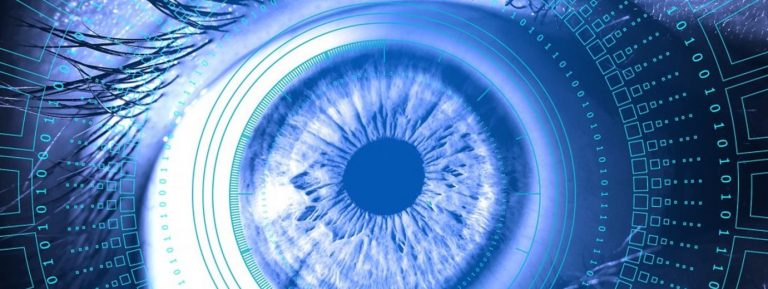Are you still in the illusion that golems, robots, gynoids & other quirky machines belong only in sci-fi movies, tech expos, and research hubs? Well, Artificial Intelligence aka AI– the brain behind these puissant machines– is no longer a term confined to the fictitious landscape. It’s a high-paid industry involving major tech heavyweights, furious startups, and billions of dollars of investment across the globe to bring about a transformation that has been kindled in the imagination of mankind for epochs. Lets look at the top artificial intelligence technologies that will rule the world in near future.
According to a report published by Narrative Science, there was only 38% percent of the companies using artificial intelligence in 2016 – but this percentage will go up to 62% by 2018.
AI involves the intelligence of machines and software. Put simply, it is an attempt to make machines mimic human behavior. Today, we are living in an exciting time where technology is expanding at a cracking pace. Of late, we have seen major innovation happen, right from chatbots to self-driving cars, to salesforce automation & machine automation; all clearly depicting that AI and its advancements are going to transform the world by taking a leap in every industry segment.
An IDC research forecasted that the artificial intelligence market will grow from $8 billion dollars to more than $47 billion by 2020.”
What drives such unquenchable desire? Why are companies pouring money into this field that sometimes promises merely a blink of success?
The reason behind this is the massive amount of data that is being generated in petabytes worldwide every second. As the flow of information is so dense, it becomes very difficult for a human being to go through the entire information. Ideally, an average person is able to focus on a task for no more than 15 minutes and jumps to other tasks if he doesn’t find it interesting within a time span of 8 seconds.
Therefore, curating and labeling such dense data with respect to a set of parameters to provide accurate information to the customer for fulfilling their requests cannot be handled with a human workforce alone. Herein, AI comes into the picture to solve this problem.
So, what are the major roadblocks in the adoption of AI among businesses? Let’s have a quick look at the below data from a survey by Forrester conducted last year.

Once these obstacles are wiped out, companies can see exciting possibilities and deliver extraordinary business value to their customers. One thing that every business– aiming to mine gold out of the emerging AI technologies– should remember that they must first identify the needs & potential business cases, instead of just focusing on the goals of building and marketing an AI-based product to their customers. KritiKal Solutions, a Technology Company having expertise in Computer Vision, Image Processing, Machine Learning, Deep Learning algorithms, and AI, builds intelligent algorithms/applications that imbue advancements to respond to the changing needs of the world.
By 2020, AI will be a top five investment priority for more than 30% of CIOs.
Source: Gartner
Based on Forrester’s analysis, here are the top 6 AI technologies that will rule in the foreseeable future:
- Computer Vision and Image Recognition Algorithms
This includes analyzing picture content to find a particular person, movements in video or analysis of their posture. AI developers work on developing algorithms to interpret meaningful data out of the video or picture content. Some high-end applications of this technology encompass Self-Driving Cars, Smarter Security Cams for Video Surveillance, or even a laser-firing system for exterminating mosquitos.
- Recognition and Interpretation of Text and Audio Content
This trend basically outlines four major technologies i.e. Text analysis, Natural Language Generation, Speech Recognition and Virtual Agents.
Text Analysis or you can say Natural Language Processing is an important technology to understand a customer’s intent. Its major application area is providing personalized ad offers/discounts, finding relevant content with respect to search queries.
Natural Language Generation involves creating human-readable text out of the computer data. This technology is mainly used in customer support, report generation, business intelligence, delivering point-of-need smart alerts.
Virtual Agents/Assistants Presumably, you heard of Amazon’s Echo, Google Assistant, Microsoft’s Cortana that have the capability to network with humans. These are currently being used in customer service and support and as a smart home manager to track household essentials.
Speech Recognition is a technique which transcribes human speech into a machine-readable format so that it can be used across a wide range of computer applications. Its major applications are interactive voice response systems and mobile applications. This trend is going to take the mainstream with the emergence of IoT.
- Platforms for Machine Learning
Tech behemoths including Google, Microsoft, Amazon are offering open datasets, APIs, development and training toolkits with computing power to design, train & deploy machine learning models. These models or machine learning-based applications are currently used across various kinds of enterprise applications and Big Data Analytics (majorly involving classification or prediction).
- Deep Learning Platforms
Deep Learning, which is a subpart of AI, comprises of artificial neural networks with multiple hidden layers. It is majorly used in Pattern Recognition and Classification Applications powered by very large data sets. Indubitably, Deep Learning is a crucial part of AI development, statistical analysis, and data processing and this is going to mark a big change in the world.
- Biometrics
This enables human-machine interaction not just limited to image and touch recognition. It also includes speech and body language recognition. One of the major applications of this technology is in market research and security-centric applications. With AI, the comparison of facial 3D prints will give more accurate results, decreasing false recognition.
- Advanced decision-making assistance
It involves adding rules and logic to the AI engines to build, train and maintain scalable applications that are capable of making automated decisions with minimal or no human interference. Decision management as a mature technology is used in a wide array of enterprise applications–assisting in or performing better-automated decisions.
The Bottom Line
The technological advancements driven by AI have the potential to introduce a new paradigm shift by expanding the horizon of human capabilities. In the foreseeable future, AI will lay the foundation for a new era in computing with these breakthroughs. In their concluding remarks, Forrester state that once the companies overcome these obstacles, they will derive enormous transformation not just in customer-facing applications but also in curating a network of enterprise intelligence.



